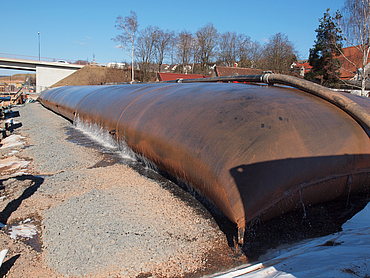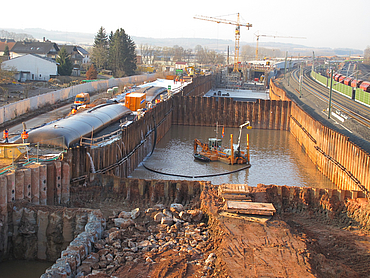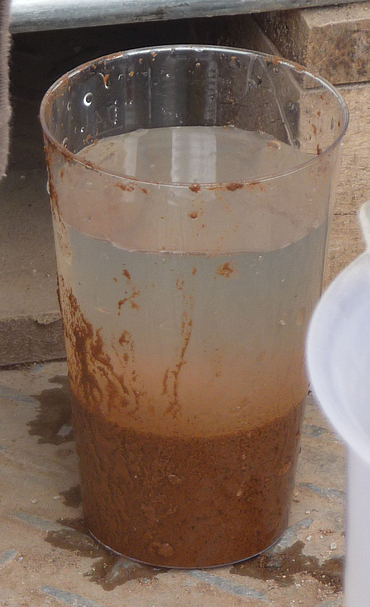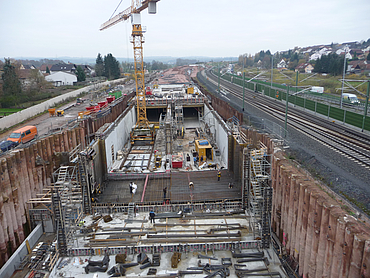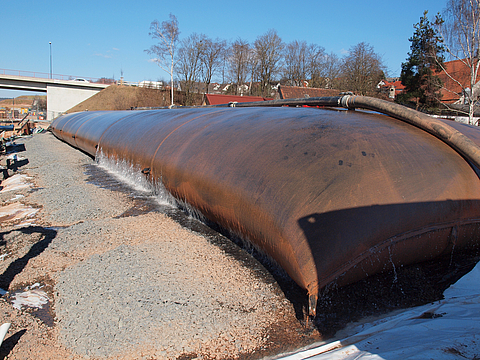
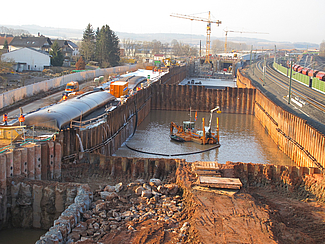
Desilting of a construction pit floor
Project information
Construction project
Construction of the remaining Autobahn section on the A66 near NeuhofCustomer
Hessen Mobil FuldaConstruction
Consortium (A66 Neuhof-Bickhardt Bau AG / Hermann Kirchner Hoch- und Ingenieur-Bau GmbH / Hochtief Solutions GmbH)Location
Neuhof , DEConstruction time
Spring to autumn 2012Products used
Project details
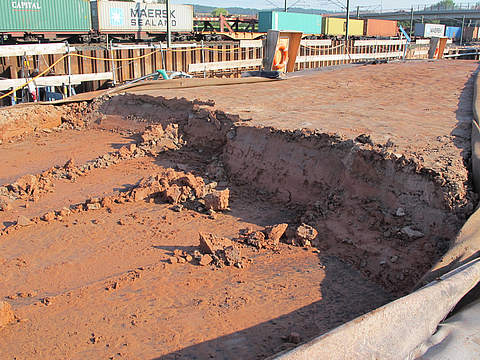
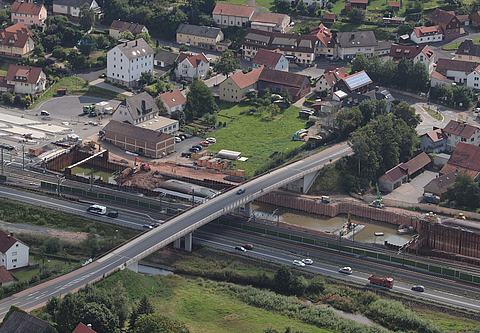
Project description
A 5 km long section of the A66 Autobahn between the Neuhof-South and Fulda-South interchanges in Germany is scheduled for completion by the year 2015. A large part of this is the construction of a 1.6 km long tunnel through Neuhof using an ‘open box’ construction method. This means that the tunnel segments are constructed in an open excavation which will then be covered after completion.
From a civil engineering point of view, the high ground water level in this area posed a complex problem in the construction of this tunnel.
Solution
Back-anchored steel sheet piles form the walls of the excavation area measuring approximately 25 by 80 metres. The ground water in the excavated area rose to 4.00 metres above the base. For structural reasons, the water could only be pumped out after the concrete slab forming the base of the future tunnel had set and was anchored firmly in the soil to prevent uplift. The extensive preparatory measures required for underwater concreting included the removal of about one metre of sludge. A special floating pumping vessel made by Watermaster was used for this purpose. During the course of construction, divers assisted in the task of removing the sludge.
The sludge was pumped from the excavation pit into a dosing and mixing machine adjacent to the site and contained within a 20’ steel container. Here the sludge was automatically mixed with polymers in a controlled process to flocculate the fine sludge particles. The processed sludge was then pumped into the dewatering tubes. These dewatering tubes lay on a special prepared dewatering area. The highly engineered dewatering fabric allowed the water to drain and return to the pit while the solids were retained in the tube. Filling was repeated in several cycles until the tube was finally filled with a solid mass which could be transported away.
Benefits
The concept of dewatering sludges using geotextile tubes originally came from the field of environmental engineering where sludges from reservoirs, water bodies or sewage treatment plants can be handled in this way.
The A66 Neuhof project, and a similar previous project involving the dewatering of a construction pit in Hamburg-Harburg, demonstrates that this application is also effective in the field of special foundation engineering.
Further information




